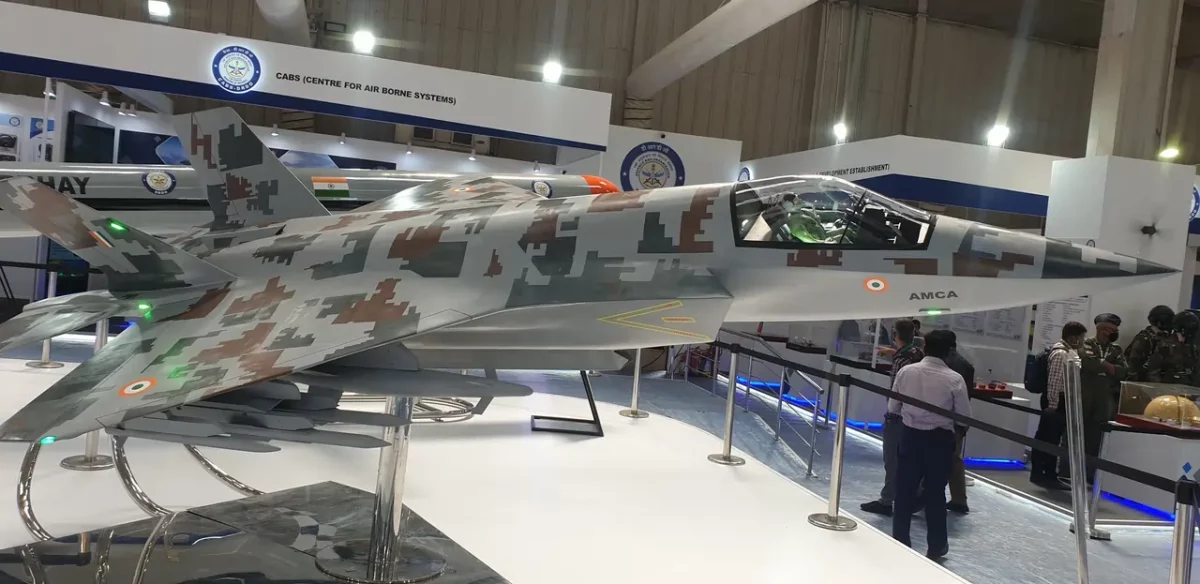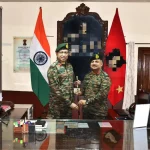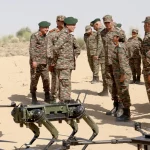Seven of India’s leading defence manufacturers have formally submitted bids to participate in the Advanced Multi-Role Combat Aircraft (AMCA) program, India’s ambitious fifth-generation stealth fighter jet project. The aircraft is slated to become the backbone of the Indian Air Force (IAF) by the mid-2030s.
The Ministry of Defence confirmed that Hindustan Aeronautics Limited (HAL), Larsen & Toubro (L&T), Adani Defence, TATA Advanced Systems Ltd (TASL), and Kalyani Strategic Systems are among the contenders, alongside two other private-sector bidders. The selection process will be overseen by a high-powered evaluation panel chaired by former DRDO scientist Dr. A. Sivathanu Pillai, who played a key role in the BrahMos missile program. The panel will evaluate both technical and commercial aspects to ensure selected firms possess advanced manufacturing capabilities, financial strength, and project management expertise.
The AMCA program represents India’s largest military research and development initiative, with an estimated budget of ₹15,000 crore for designing, engineering, and constructing prototype aircraft. Upon successful validation, an initial order of 120 aircraft is expected, with long-term production potentially reaching several hundred units over the next two decades. The program’s scale makes it one of the most significant and lucrative defence contracts in India’s history.
Under the Expression of Interest (EoI) floated earlier this year by the Aeronautical Development Agency (ADA), the selected partner is expected to deliver a fully capable prototype within eight years. Serial production is projected to begin around 2035, aligning with the phasing out of older IAF aircraft such as the MiG-29 and Mirage-2000.
The AMCA is designed with comprehensive fifth-generation capabilities, including stealth shaping, radar-absorbing materials, advanced avionics with sensor fusion, AI-assisted piloting, electronic warfare systems, and long-range precision weapons. The aircraft will also support manned-unmanned teaming (MUM-T), enabling operations in tandem with autonomous drones for high-risk missions.
The initial development phase will focus on producing four to five prototype aircraft to validate stealth performance, sensors, and avionics. Lessons from the Tejas program and Rafale integration are expected to accelerate testing and operational readiness.
Unlike previous programs dominated by HAL, the AMCA project adopts a competitive industrial participation model, encouraging private sector involvement. Firms like Adani, TATA, and L&T bring expertise in aerospace fabrication, systems integration, and global joint ventures, while Kalyani Strategic Systems contributes specialised defence components and metallurgy capabilities. HAL retains its experience in fighter assembly through Tejas and Su-30 programs.
Strategically, the AMCA program aims to give India an indigenous stealth fighter capability comparable to the American F-35 and Chinese J-31. Economically, it is expected to stimulate domestic supply chains, generate thousands of skilled jobs, and foster innovation across the aerospace sector.
The long-term outlook includes the development of successive MK-1 and MK-2 variants with advanced indigenous engines, enhanced avionics, network-centric warfare capabilities, and potential export opportunities. Once inducted, the AMCA will serve as the IAF’s primary fighter from 2035 to 2055, reinforcing India’s goal of strategic autonomy in high-tech aerospace platforms and reducing reliance on foreign imports.













